There are many fish names that start with P. Some of these fish include the Pike, the Perch, and the Pollock, among many others.
Each of these fish is unique in its own way, and we’d thought we’d take a look at these creatures. Whether you’re looking for aquarium fish, saltwater fish, tropical fish, or anything else, they’re all here!
Keep reading to learn more about fish names that start with P.
List of Fish Names That Start With P
There are many famous fish names that start with P. Here; we see such fish as the aquarium favorite, the pearl danio, the infamous piranha, and the delicious pacific cod. There are many other species of fish that have fish names starting with P.
Here we’re going to list them all but split them into freshwater and saltwater fish. In each section, we’ll highlight some of the most famous fish that start with P.
Freshwater Fish Beginning with P
Panda Corydoras (Corydoras panda)

The Panda Corydoras is a species of fish that is native to South America. The fish is named for its black and white coloration, resembling a panda bear. The Panda Corydoras grows to an average length of 2.5 inches and is a popular choice for aquariums.
The tropical fish is a peaceful community fish and does well with other species. The Panda Corydoras is omnivorous and will eat most types of food, including pellets, flakes, and live food.
The fish prefers to live in groups and should be kept in an aquarium with at least six other fish of the same species. The Panda Corydoras is a hardy fish and can live for up to 10 years with proper care.
Parrot Cichlid (Hoplarchus psittacus)
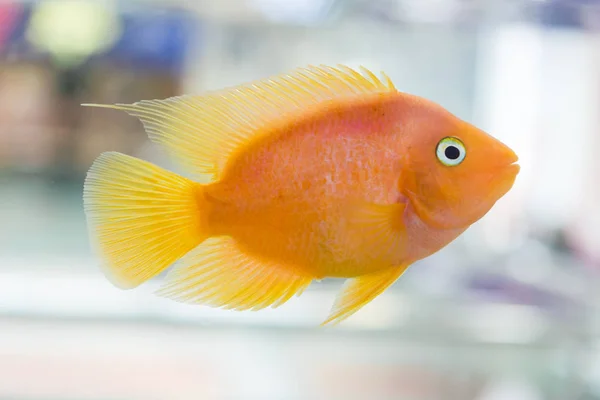
The parrot cichlid is a striking fish that is native to the Amazon Basin. Also known as the “red-bellied piranha,” this brightly colored cichlid can grow to be up to 18 inches in length.
The parrot cichlid gets its name from its powerful beak-like mouth, which it uses to crush shells and eat small fish. In the wild, these fish are found in slow-moving rivers and lakes.
They typically live in schools of up to 100 individuals but can also be found in smaller groups or as solitary fish. Parrot cichlids are popular aquarium fish and are prized for their bright colors and lively personality.
These fish are not recommended for beginners, as they can be aggressive towards other tank mates. However, parrot cichlids can make a beautiful and entertaining addition to any aquarium with proper care.
Peacock Cichlid (Aulonocara Nyassae)

The Peacock Cichlid (Aulonocara nyassae) is a species of freshwater fish native to Lake Malawi in East Africa. The Peacock Cichlid is a relatively small fish, reaching a maximum length of just over 4 inches.
Males are brightly colored, with orange-red fins and bluish-green bodies covered in barring and spots. Females are much drabber, with a brownish body and duller fins. Both sexes have long, filamentous extensions on the dorsal and anal fins.
The Peacock Cichlid is a peaceful fish that is often kept in aquariums. It is an omnivorous species that feeds on insects, crustaceans, and plant matter.
Peacock Cichlids are also known to clean other fish, removing parasites and dead skin. This helpful behavior has led to the Peacock Cichlid being nicknamed the “Cleaner Fish.”
Pearl Danio (Brachydanio albolineatus)

The Pearl Danio is a small, brightly colored fish native to Southeast Asia. A member of the Cyprinidae family, it is closely related to the popular Zebrafish.
The Pearl Danio has a slender body and can grow to a length of approximately 3 inches. Its coloration is silver-white, with blue stripes running along the sides of its body. It is a peaceful fish that does well in community tanks.
It is an active swimmer and prefers to school with other fish. In the wild, the diet of the Pearl Danio consists primarily of insects and small crustaceans. In captivity, it will accept a variety of live, frozen, and freeze-dried foods.
Piranha (Pygocentrus nattereri)

The Piranha is a freshwater fish that is native to South America. It is most commonly found in the Amazon River basin.
The Piranha is a carnivorous fish with sharp teeth, and its diet consists mainly of other fish and aquatic invertebrates. However, the Piranha is also known to be an opportunistic feeder and will eat just about anything it can find.
This includes fruits, seeds, and even carrion. They have a reputation for being a voracious predator, but this is largely undeserved.
Even then, they usually only go after weak or injured prey. However, there have been cases of Piranhas attacking humans. In most cases, these attacks occur when the fish are provoked or feel threatened.
Other freshwater fish starting with P:
- Pacific Fat Sleeper Goby (Dormitator latifrons)
- Pacific Lamprey (Entosphenus tridentatus)
- Pacific Salmon (Oncorhynchus nerka)
- Pacu (Myleus rubripinnis rubripinnis)
- Paddlefish (Polyodon spathula)
- Painted Glass Fish (Chanda sp.)
- Painted Talking Catfish (Acanthodoras cataphractus)
- Pakistani Loach (Botia lohachata)
- Palembang Pufferfish (Tetraodon biocellatus)
- Panda Dwarf Cichlid (Apistogramma nijsseni)
- Panga (Pangasianodon hypophthalmus)
- Papuan Rainbowfish (Melanotaenia papuae)
- Paradise Fish (Macropodus opercularis)
- Paradise Threadfin (Polynemus paradiseus)
- Paraense Catfish (Brachyplatystoma paraense)
- Paraguay Mouthbrooder (Gymnogeophagus balzanii)
- Parallel Striped Mbuna (Melanochromis parallelus)
- Parasitic Catfish (Vandellia cirrhosa)
- Parkinson’s Rainbowfish (Melanotaenia parkinsoni)
- Parnahybae Catfish (Brachyplatystoma parnahybae)
- Paroon Shark (Pangasius sanitswongi)
- Parrot Pacu (Ossubtus xinguensis)
- Pasionis Cichlid (Cichlasoma pasionis)
- Pastel Cichlid (Amphilophus alfari)
- Payne’s Synodontis (Mochokiella paynei)
- Peaceful Betta (Betta imbellis)
- Peacock Eel (Macrognathus aculeatus)
- Peacock Goby (Tateurndina ocellicauda)
- Peamouth (Mylocheilus caurinus)
- Pearl Cichlid (Geophagus brasiliensis)
- Pearl Gourami (Trichogaster leeri)
- Pearl Roach (Rutilus erythrophthamus)
- Pearl-Linned Lamprologus (Neolamprologus tetracanthus)
- Pearly Lamprologus (Altolamprologus calvus)
- Penang Mouthbrooding Fighter (Betta pugnax
- Pencil Catfish (Vandellia cirrhosa)
- Pencilfish (Nannostomus unifasciatus)
- Pencilsmelt (Microstoma microstoma)
- Penguin Tetra (Thayeria boehlkei)
- Pepper Tetra (Axelrodia stigmatias)
- Peppered Corydoras (Corydoras paleatus)
- Perch (Perca flavescens)
- Perruno Catfish (Perrunichthys perruno)
- Peruvian Tetra (Hyphessobrycon peruvianus)
- Peter’s Elephantnose (Gnathonemus petersii)
- Peters’ Elephantnose Fish (Gnathonemus petersii)
- Pickerel (Esox cisalpinus)
- Pictus Catfish (Pimelodus pictus)
- Pig-Face Pufferfish (Tetraodon suvatti)
- Pike (Esox lucius)
- Pike Cichlid (Crenicichla lepidota)
- Pike Piranha (Serrasalmus elongatus)
- Pikeperch (Sander vitreus)
- Piketop Minnow (Belonesox belizanus
- Pinche Piranha (Serrasalmus eigenmanni)
- Pingi Logsucker (Garra pingi pingi)
- Pink Salmon (Oncorhynchus gorbuscha)
- Pinktailed Chaleus (Chalceus macrolepidotus)
- Piraiba Catfish (Brachyplatystoma filamentosum
- Pirarucu (Arapaima gigas)
- Pirate perch (Aphredoderus sayanus)
- Piraya Piranha (Serrasalmus piraya)
- Pittier’s Tetra (Moenkhausia pitteri)
- Plain Goby Cichlid (Spathodus marlieri)
- Plain Nattereri (Copella nattereri)
- Platinum Tetra (Hemigrammus vorderwinkleri)
- Platy (Xiphophorus maculatus)
- Pleco (Hypostomus plecostomus)
- Plumed Lyretail (Aphyosemion filamentosum)
- Poll’s Upside-Down Catfish (Synodontis polli)
- Pollen’s Cichlid (Paratilapia polleni “Madagascar”)
- Polli Marbled Bichir (Polypterus palmas polli)
- Port Acara (Aequidens portalegrensis)
- Port Hoplo (Hoplosternum thoracatum)
- Port Jackson Shark (Heterodontus portusjacksoni)
- Porthole Catfish (Dianema longibarbis)
- Powder Blue Gourami (Colisa lalia)
- Powen (Coregonus pennantii)
- Praecox Rainbowfish (Melanotaenia praecox)
- Pretty Pleco (Peckoltia pulcher)
- Pretty Tetra (Hemigrammus pulcher)
- Pumpkinseed (Lepomis gibbosus)
- Pupfish (Cyprinodon macularius)
- Purple Cichlid (Pelvicachromis pulcher)
- Purple Headed Barb (Barbus nigrofasciatus)
- Purple Mbuna (Melanochromis vermivorus)
- Purple-Spotted Gudgeon (Mogurnda adspersa)
- Purple-Striped Gudgeon (Mogurnda mogurnda)
- Pygmy Rasbora (Boraras maculatus)
- Pygmy Sunfish (Elassoma zonatum)
Saltwater Fish Beginning with P
Pacific Cod (Gadus macrocephalus)
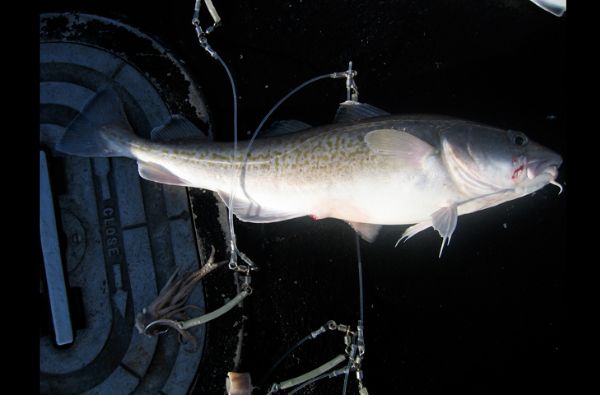
The Pacific Cod (Gadus macrocephalus) is a ray-finned fish found in the Northern Pacific Ocean. It is a member of the cod family, which also includes haddock, pollock, and hake.
The Pacific Cod typically has a dark brown or greenish back, with white spots on its belly. It can grow to be up to four feet long and weigh up to fifty pounds. The Pacific Cod is an important commercial fish and is often caught for food.
It is also a popular choice for aquaculture, as it is easy to farm and has a high survival rate in captivity. The Pacific Cod is an important part of the marine ecosystem, and its populations are carefully managed in order to ensure its long-term sustainability.
Plaice (Pleuronectes platessa)
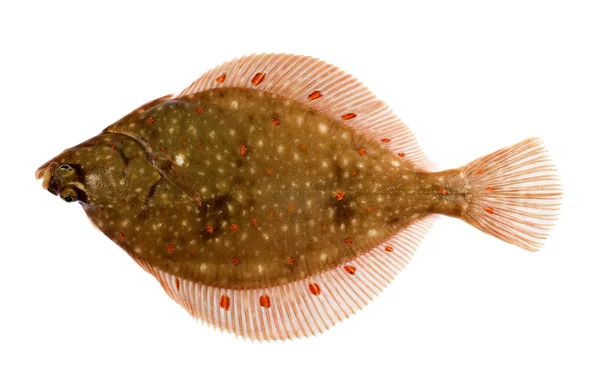
Plaice is a flatfish that is found in the Northeast Atlantic Ocean, as well as in the Baltic and Mediterranean Seas. It is a member of the Pleuronectidae family, which also includes sole, halibut, and flounder.
Plaice has a brown or grey body with dark spots and a distinctive orange hue on its underside. Its diet consists primarily of amphipods, worms, and other small invertebrates. Plaice is an important commercial fish species and is often used for food.
It is also popular as a sport fish due to its delicious flesh and fighting qualities. Plaice is an easy fish to identify, and its unique appearance makes it a popular choice for aquaria.
Pollock (Pollachius pollachius)
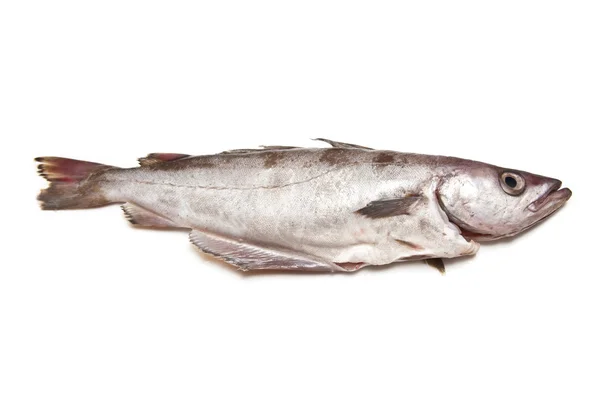
Pollock is a type of fish in the cod family. It is found in the northeastern Atlantic Ocean, as well as in the North Sea and the Mediterranean Sea.
Pollock is a lean fish with a firm texture. It has a mild flavor and can be cooked in many different ways. It is often used in fish, chips, and other fried dishes. Pollock is a popular fish for both commercial and recreational fishing.
The fish are typically caught using trawls or gill nets. They are also sometimes caught by anglers using line and bait. Pollocks are an important food source for humans and animals alike. In addition to being eaten fresh, they are also canned, smoked, or made into fishmeal.
Pufferfish (Torquigener albomaculosus)
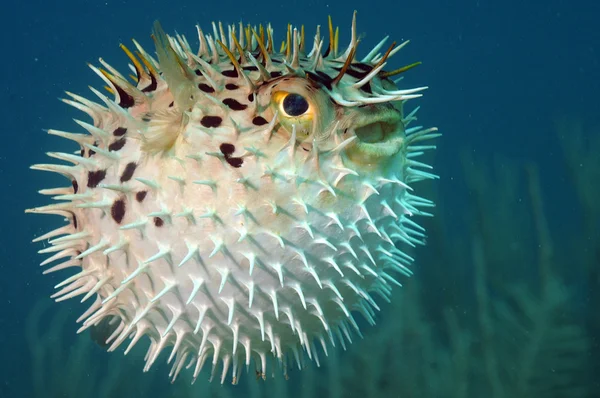
The Pufferfish is a unique and fascinating creature. Also known as the blowfish or balloonfish, the Pufferfish is able to inflate itself by swallowing water or air. When threatened, it will puff up, making it difficult for predators to swallow.
The Pufferfish is also noted for its slow, deliberate movements and ability to change direction quickly. It is found in warm waters around the world, and it is a popular food fish in Japan, where it is known as fugu.
Pufferfish are also kept as pets, although their spikes can make them difficult to handle. Overall, it is a strange and wonderful animal that is sure to intrigue anyone who sees it.
Other saltwater fish starting with P:
- Pacific Albacore (Thunnus alalunga)
- Pacific Hake (Merluccius productus)
- Pacific Herring (Clupea pallasii)
- Pacific Saury (Cololabis saira)
- Pacific Viperfish (Chauliodus macouni)
- Pancake Batfish (Halieutichthys aculeatus)
- Parore (Girella tricuspidata)
- Parrotfish (Scarus frenatus)
- Peacock Flounder (Bothus mancus)
- Pearl Perch (Glaucosoma magnificum)
- Pearleye (Benthalbella infans)
- Pearlfish (Echiodon rendahli)
- Pelagic Cod (Melanonus gracilis)
- Pelican Eel (Eurypharynx pelecanoides)
- Pigfish (Bodianus unimaculatus)
- Pike Conger (Congresox talabon)
- Pikeblenny (Emblemaria atlantica)
- Pilchard (Dussumieria acuta)
- Pilot Fish (Naucrates ductor)
- Pineapplefish (Cleidopus gloriamaris)
- Pineconefish (Monocentris japonica)
- Píntano (Abudefduf sordidus)
- Pipefish (Syngnathoides biaculeatus)
- Plownose Chimaera (Callorhinchus milii)
- Poacher (Aspidophoroides monopterygius)
- Pollyfish (Scarus frenatus)
- Pomfret (Brama brama)
- Pompano (Trachinotus carolinus)
- Pompano Dolphinfish (Coryphaena equiselis)
- Ponyfish (Eubleekeria splendens)
- Popeye Catalufa (Pristigenys serrula)
- Porbeagle Shark (Lamna nasus)
- Porcupinefish (Diodon nicthemerus)
- Porgy (Diplodus vulgaris)
- Prickleback (Cebidichthys violaceus)
- Pricklefish (Stephanoberyx monae)
- Prickly shark (Echinorhinus cookei)
- Prowfish (Zaprora silenus)

